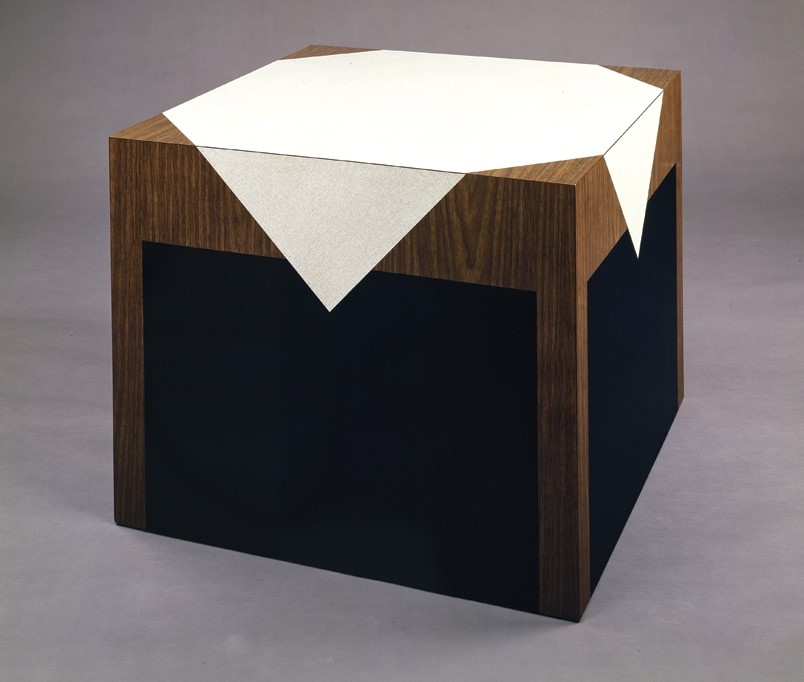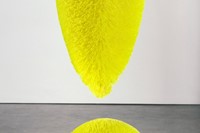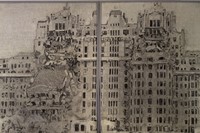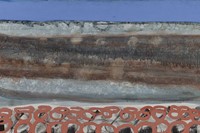In 1960, whilst working as a furniture maker in New York, Richard Artschwager received a commission from the Catholic Church requesting him to build a selection of portable altars for use on ships...
In 1960, whilst working as a furniture maker in New York, Richard Artschwager received a commission from the Catholic Church requesting him to build a selection of portable altars for use on ships. Although having made paintings and drawings since the late 1950s, it was this unusual request that compelled the Washington-born artist to start experimenting with wood and acrylic paint to create small, wall-based objects. These works would eventually lead to more substantial geometrical sculptures referencing everyday household objects and that accentuated an artificial quality, often using odd, fabricated materials such as Celotex (ceiling insulation boards) and rubberized horsehair. In Description of Table (1964), the illusion of a crisp, cotton tablecloth is presented using the synthetic nature of melamine laminate. Where a mirror should be in the dressing table composition Portrait II (1963), a square of canary yellow Formica stands instead. Furniture-like in form, Artschwager’s cheerfully-coloured yet eerily blank works became the artist’s way of exploring his interest in mixing two- and three-dimensional perceptual experiences, surprising the viewer, making them look again. These works, the artist has said, were meant to be experienced both as the image of an object and as the object itself.
"Artschwager’s cheerfully-coloured yet eerily blank works became the artist’s way of exploring his interest in mixing two- and three-dimensional perceptual experiences..."
Works spanning a period of fifty years are currently on show at this octogenarian's retrospective at the Whitney Museum – home, also, to the artist’s first, and last, career survey back in 1988. This leading museum of American art is a fitting backdrop for Artschwager, given his prominence as an American artist from the middle of the century onwards; yet he has always been considered an outsider, with a significantly quieter profile compared to contemporaries such as Warhol and Lichtenstein. Perhaps Artschwager naturally stood apart, due to his outstanding intellect (studies in Maths, Chemistry and Biology at Cornell; fluent in three languages; plays Beethhoven from memory) and some outstanding experiences (three trips to Europe on an ocean liner before the age of ten, teen-hood in New Mexico, serving in the second world war).
Though often misconstrued, the artist's enigmatic nature can best be appreciated within his "blp" works (pronounced 'blip'): a series of oblong-shaped symbols, mostly black, which Artschwager first dotted about the Konrad Fischer gallery in the late 1960s. Scattered inside and outside museums, either in three-dimensional form, or spray painted using a stencil, blps were intended for viewers to spot by accident or locate systematically. Artschwager has said that the blps have just one purpose: to make us pay attention to what is around us, and to accompany the current exhibition in New York, 10 blps of varying sizes have been positioned on the High Line, which runs through Chelsea and the Meatpacking District.
Richard Artschwager! is at the Whitney Museum of American Art until 3rd February 2013.
Text by Allie Biswas



